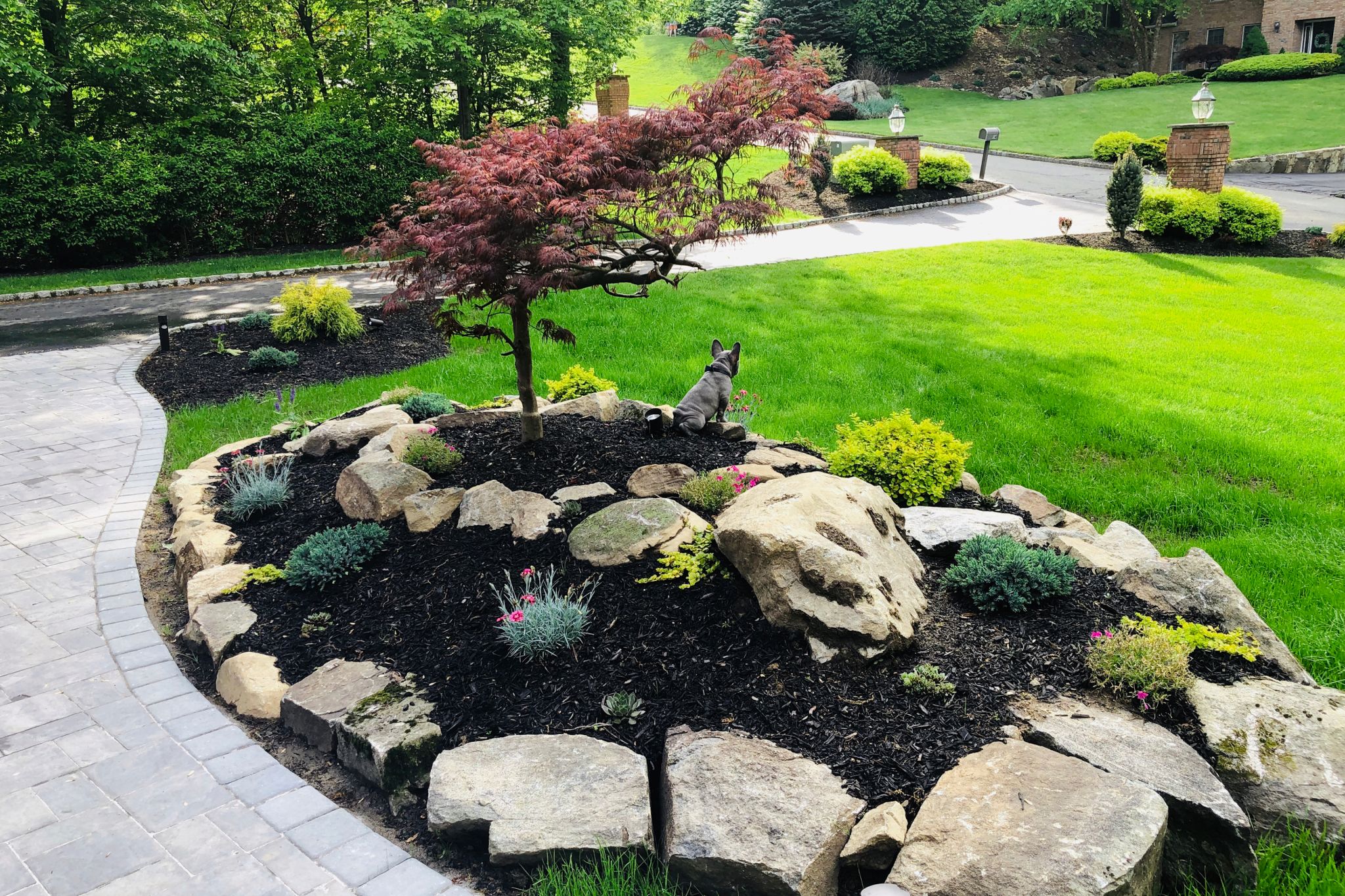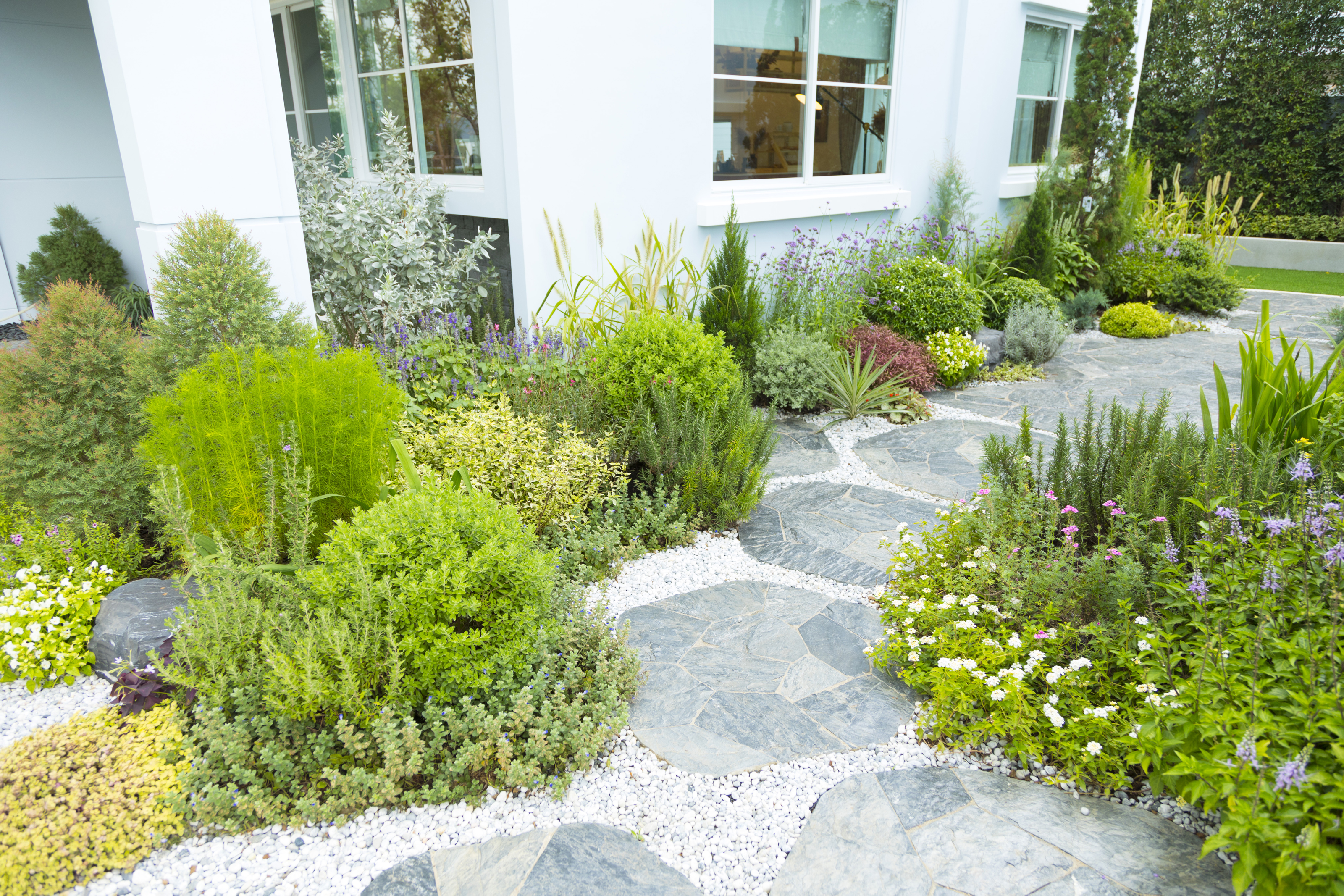Transform Your Garden With Cutting-edge Landscape Design Ideas and Methods
Changing a yard needs thoughtful factor to consider of its distinct qualities. Effective landscape Design can enhance both capability and aesthetic appeal. By checking out various techniques, one can produce a room that not only mirrors individual style but likewise supports regional biodiversity. As the journey unravels, concerns about plant option, layout, and sustainability arise, prompting a deeper exploration into how to make these ideas come to life.
Evaluating Your Outdoor Area: Comprehending Your Garden's Potential
Assessing outdoor space is necessary for reliable landscape layout. Recognizing the one-of-a-kind features of a yard enables designers to optimize its capacity. Elements such as soil quality, sunshine exposure, and existing frameworks play a crucial function in determining what can be achieved. Assessing the topography aids recognize areas for planting, paths, or water features, while keeping in mind drain patterns assures that plants flourish without waterlogging.
Additionally, acknowledging the garden's microclimates can influence plant selection and positioning. Observing how the space is utilized by homeowners notifies useful Design selections, such as seating locations or play zones. Additionally, taking into consideration the bordering atmosphere and surrounding landscapes can give motivation and context for Design choices. By thoroughly checking out these elements, one can develop a natural and inviting outdoor area that reflects the proprietor's vision while integrating with nature. Eventually, a complete examination lays the groundwork for an effective landscape Design job.
Picking the Right Plant Kingdoms: A Guide to Shade, Appearance, and Seasonal Rate of interest
When picking plants for a landscape style, recognizing the interplay of shade, texture, and seasonal rate of interest is vital for developing a vibrant and vibrant yard. Color can evoke emotions and established the tone for the space; as a result, choosing a harmonious scheme improves aesthetic appeal. Cozy tones like oranges and reds produce energy, while cooler tones like blues and greens supply tranquility.
Texture includes depth and measurement, enabling a mix of foliage sizes and shapes. Integrating fine-textured plants with bold-leaved ranges creates comparison and intrigue.
Seasonal rate of interest is very important for maintaining year-round appeal. Picking a selection of plants that bloom in different seasons guarantees that the yard stays vibrant, changing from springtime's lively flowers to autumn's abundant vegetation. By thoughtfully thinking about these elements, one can curate a landscape that is not just visually pleasing yet engaging and also diverse throughout the year.

Producing Useful Zones: Designing Spaces for Leisure and Entertainment
Producing practical areas in a landscape Design boosts the usability of outdoor rooms, enabling property owners to effortlessly mix relaxation and entertainment. By thoughtfully splitting locations into distinct zones, individuals can deal with different activities, from peaceful hideaways to dynamic gatherings. A well-designed area may incorporate a comfy analysis space nestled amongst lush greenery, giving a peaceful getaway (Landscaper). On the other hand, a lively outside dining area can act as the best setting for celebrations with household and close friends
Strategically positioned paths can lead guests in between these zones, ensuring very easy navigation. In addition, incorporating components like seating locations, fire pits, or water attributes can boost the general ambiance and functionality. The integration of diverse structures and colors in each area can create aesthetic interest while maintaining a natural visual. Inevitably, creating functional areas allows homeowners to optimize their outside experience, changing their gardens right into versatile spaces that fulfill varied way of life demands.
Incorporating Hardscape Aspects: Patios, Walkways, and Focal Points
Incorporating hardscape aspects right into landscape Design enhances useful zones by supplying framework and visual allure. Patios function as essential outside home, allowing home owners to delight in dishes and celebrations in a specified location while enhancing availability. The option of products, such as natural stone or concrete, can greatly influence the overall aesthetic, blending effortlessly with the surrounding setting.
Walkways help with motion via the yard, leading visitors while including depth and rate of interest. These courses can be crafted from numerous products, consisting of crushed rock, pavers, or block, each adding to the garden's personality.
Prime focus, such as decorative boulders, sculptures, or water functions, attract the eye and create a sense of purpose within the landscape. Tactically placed, these elements can change an average yard into an intriguing space, welcoming expedition and engagement. Via thoughtful assimilation of hardscape, a landscape comes to be not just functional yet also aesthetically sensational.
Enhancing Privacy and Safety And Security: Natural Barriers and Frameworks
To improve privacy and security in landscape layout, making use of natural obstacles such as thick bushes can efficiently secure a property from undesirable views. Furthermore, installing personal privacy fences gives a solid framework that adds to a feeling of safety and security look at these guys and privacy. With each other, these components create an even more intimate outdoor area while deterring possible invasions.
Growing Thick Hedges
While numerous house owners seek visual charm in their landscapes, planting thick bushes offers a dual objective of boosting personal privacy and safety and security. These natural barriers develop a visual shield, effectively obstructing the view from prying eyes and discouraging prospective intruders. Different types, such as boxwood, holly, or privet, can be chosen for their development patterns and vegetation thickness, ensuring lush insurance coverage throughout the year. Additionally, well-maintained bushes can add to a relaxing atmosphere, soaking up noise and supplying an environment for wildlife. The tactical positioning of these hedges can define property limits and create private outside rooms, enabling home owners to enjoy their gardens with a feeling of security. Eventually, thick hedges are a reliable service for mixing charm with capability.
Setting Up Personal Privacy Fences
Privacy fences serve as another reliable approach for enhancing privacy and security in property landscapes. These frameworks not just mark home boundaries however likewise develop a feeling of privacy, securing property owners from prying eyes. Various products, such as steel, plastic, and wood, offer distinctive appearances and degrees of resilience, allowing home owners to select based on their Design preferences and upkeep needs.

Lasting Landscaping: Eco-Friendly Practices for a Greener Garden
Lasting landscape design stresses the relevance of indigenous plant choice and water preservation methods. By choosing plants that are well-adapted to the neighborhood environment, garden enthusiasts can reduce maintenance and additional hints resource usage. Executing effective sprinkling approaches even more boosts the garden's environmental benefits, promoting a healthier ecological community.
Native Plant Selection
Native plant option plays a crucial duty in lasting landscaping, promoting biodiversity and lowering the requirement for chemical inputs. By picking plants native to a certain area, gardeners can produce environments that support local wildlife, such as pollinators, birds, and helpful pests. These plants are adapted to the regional environment and dirt conditions, requiring much less water and maintenance compared to non-native species. Additionally, native plants can assist control disintegration and improve dirt health, cultivating a balanced environment. Including native types into landscape designs not only boosts the aesthetic allure of the yard but also contributes to ecological resilience. Inevitably, indigenous plant choice is an essential strategy for those looking for to grow a lively and sustainable yard.
Water Preservation Techniques
Integrating native plants can substantially boost water conservation efforts in landscaping. These plants are well-adapted to local climates, needing much less water and upkeep than non-native selections. Applying drip watering systems enables targeted watering, minimizing evaporation and runoff. Rainwater gathering systems can likewise be mounted, storing and gathering rainwater for garden use. Mulching aids preserve dirt wetness, lowering the frequency of watering. Organizing plants with similar water requires with each other produces efficient sprinkling areas, even more preserving water. In addition, making use of absorptive products for paths allows rain to seep into the ground, restoring groundwater products. By using these water preservation techniques, garden enthusiasts can produce lasting landscapes that flourish while reducing ecological impact (Landscaping Design San Diego). Such methods add to a greener garden and a healthier ecological community
Customizing Your Layout: Adding Special Attributes and Personal Touches
Just how can one transform a yard into a personal sanctuary? Customizing a landscape Design includes integrating unique features that reflect private preferences and way of livings. One method is to incorporate tailored garden art, such as sculptures or handmade birdhouses, which can offer as focal factors and discussion starters. On top of that, customizing plant choices based upon individual preferences or seasonal blooms can develop a lively and progressing space.
Producing useful locations, such as a relaxing analysis nook or an exterior eating space, can enhance usability and comfort. Additionally, including elements like a fire pit or a water feature can introduce a welcoming atmosphere.
Shade products, plans, and textures ought to line up with the house owner's style, whether it be modern, rustic, or eclectic. Eventually, the goal is to create a room that reverberates with the person's identification, making the yard not simply a visual pleasure however a real expansion of the homeowner's personality.
Often Asked Inquiries
Just how Do I Allocate a Landscape Design Task?
To spending plan for a landscape Design job, one need to evaluate project extent, research prices for products and labor, focus on functions, and allot an extra 10-20% for unanticipated expenses, ensuring a sensible monetary strategy.
What Devices Are Essential for Home Yard Landscaping?
Vital tools for home garden landscape design include a shovel, rake, yard fork, pruning shears, trowel, hoe, and wheelbarrow. These instruments help in soil preparation, growing, maintenance, check this and reliable transport of products throughout the landscape design project.
How Can I Preserve My Garden After Revamping?
To keep a redesigned garden, routine watering, mulching, weeding, and trimming are crucial (Artificial Grass). Tracking plant health and wellness, readjusting dirt nutrients, and seasonal plant treatment add to a successful setting that showcases the garden's new Design properly
When Is the most effective Time to Start Landscape Design?

Can I DIY My Landscape Design or Should I Hire a Specialist?
People can definitely DIY their landscape Design if they possess creative thinking and basic skills; nonetheless, employing an expert usually guarantees a much more natural and experienced result, specifically for complex tasks or details Design desires.
Identifying the garden's microclimates can affect plant selection and placement. When selecting plants for a landscape design, recognizing the interplay of shade, structure, and seasonal interest is important for producing a dynamic and dynamic yard. Picking a range of plants that bloom in different seasons guarantees that the garden stays vibrant, moving from springtime's vivid flowers to fall's rich vegetation. Incorporating native types right into landscape develops not only boosts the aesthetic appeal of the garden however also contributes to ecological strength. Crucial tools for home garden landscape design include a shovel, rake, garden fork, pruning shears, trowel, hoe, and wheelbarrow.